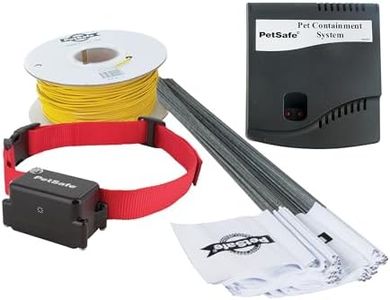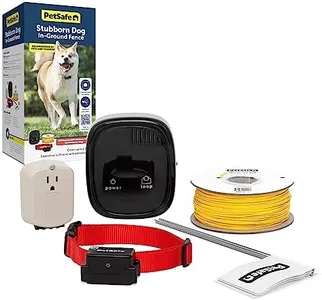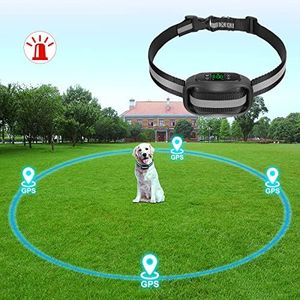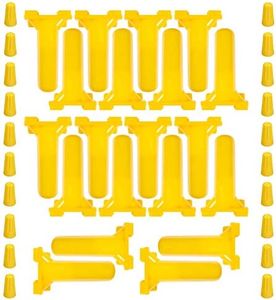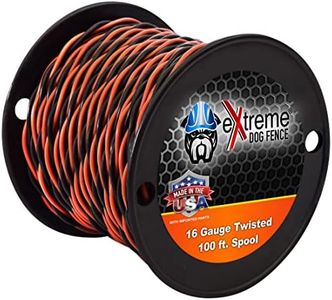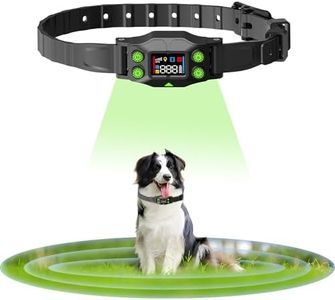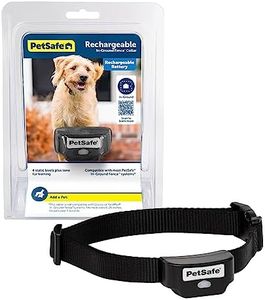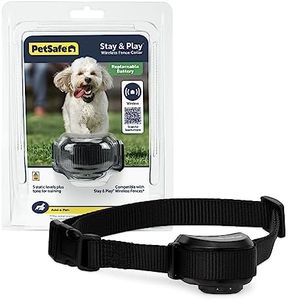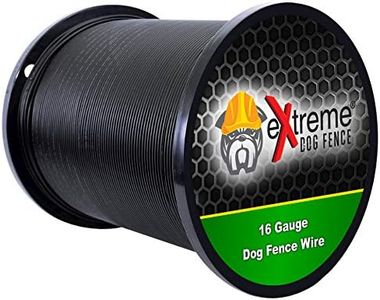We Use CookiesWe use cookies to enhance the security, performance,
functionality and for analytical and promotional activities. By continuing to browse this site you
are agreeing to our privacy policy
10 Best Invisible Fences
From leading brands and best sellers available on the web.Buying Guide for the Best Invisible Fences
When choosing an invisible fence for your pet, it's important to focus on both your pet's safety and the suitability for your yard or property. An invisible fence works by sending signals to a collar worn by your pet, creating a virtual boundary they should not cross. You’ll want to consider your property layout, the temperament and size of your pet, and how much control you want over the containment area. Consider your pet's training needs as well—some animals require more gradual introduction and training to adapt to invisible boundary systems. By paying attention to key product features, you can find a model that gives peace of mind while keeping your pet safe and comfortable in their environment.Fence Coverage AreaThe coverage area refers to the maximum amount of space an invisible fence can enclose. This is typically measured in acres or square feet. A small area works well for compact yards, while larger systems are designed for spacious lawns or properties with lots of running space. When deciding, match the system's maximum coverage to both your property size and the areas you're comfortable letting your pet roam. If you have a small backyard, a low-coverage system is often sufficient, but for larger or unusually shaped properties, selecting a system with a higher coverage capacity ensures complete and secure containment.
Wired vs. Wireless SystemsInvisible fences come in two main types: wired and wireless. Wired systems use a physical wire you bury around your desired perimeter, while wireless systems use a radio signal from a transmitter to create a circular coverage area. Wired systems allow more precise shaping of boundaries, which is useful for odd-shaped or split yards, while wireless systems are easier to install but have less flexible coverage limits and work best for open, flat areas. Choose wired if you need custom boundaries or have a non-standard yard shape, and wireless if you prioritize simplicity and have a straightforward, unobstructed property.
Correction Levels and TypesCorrection level refers to how the system notifies and corrects your pet when they approach the boundary. This could be an audible tone, vibration, or a mild static stimulation. Some systems offer multiple levels of correction, allowing you to adjust based on your pet's size, temperament, and training progress. If you have a sensitive or small pet, lower levels or just sound and vibration might suffice, whereas more stubborn pets may require adjustable static corrections. Selecting a system with customizable correction lets you start gently and increase only if necessary, promoting humane and effective training.
Collar Size and CompatibilityInvisible fences use a collar receiver worn by your pet. Collar size refers to the physical fit (neck size and device weight), while compatibility means whether the collar works with the fence and can be used for multiple pets. Lightweight, adjustable collars are suitable for small breeds, while larger, more robust collars suit big dogs. When choosing, measure your pet’s neck and ensure the collar is comfortable and not too heavy. If you have multiple pets, ensure the system supports extra collars for each animal.
Battery Life and Power SourceThe system's power source—whether for the collar or fence unit—impacts convenience and maintenance. Some collars use replaceable or rechargeable batteries; longer battery life means less frequent changes or charging. The fence base may plug in to a wall outlet or use batteries for operation. Select a system with battery life that matches your lifestyle—if you prefer low maintenance and infrequent battery swapping, look for long-lasting or rechargeable options.
Waterproofing and DurabilitySince pets often play outdoors in all sorts of weather, the collar and any aboveground components should be waterproof and built to withstand rough play and exposure. Waterproof collars are important for dogs who like to swim or may get caught in the rain. Durability is essential for peace of mind and longevity, particularly with active, rugged pets. Select systems rated for outdoors and waterproof to ensure they stand up to the elements and daily pet activity.
Ease of Installation and SetupInstallation difficulty varies between models. Wired systems typically require burying wire and more planning, while wireless systems are plug-and-play. Consider your willingness to do yard work or if you prefer a quicker, less involved setup. If you’re comfortable with DIY tasks, a wired system gives you the most flexibility, but if you want a fast and simple process, choose a wireless option.
Training Support and GuidanceSuccessfully using an invisible fence depends on proper pet training. Many systems come with training instructions, flags, or videos to help your pet learn the boundaries safely. Importance should be given to systems that provide clear, supportive training materials, as this improves the chances of an easy transition for your pet. If you’re new to invisible fences or have a pet that’s difficult to train, prioritize systems with solid training support.

